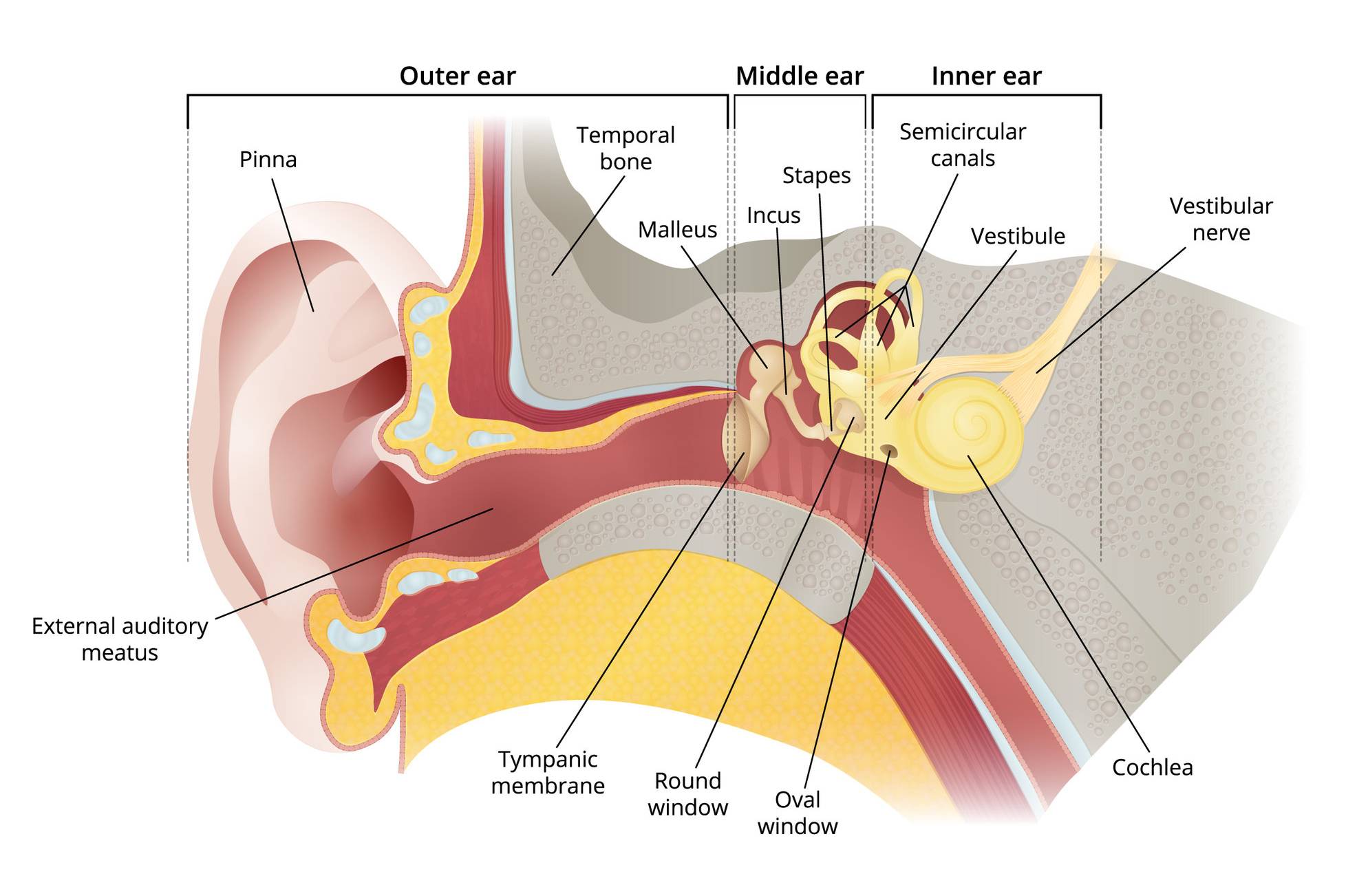Have you ever wondered about the intricate process that takes place in our ears before we are able to hear a sound clearly? Understanding the correct chronological sequence of events for hearing is like unlocking a captivating mystery. From the moment sound waves hit our ears to the transmission of signals to our brain, every step plays a crucial role in our ability to perceive sound accurately. In this blog, we will delve into the fascinating journey sound takes within our auditory system and unravel the precise sequence of events that enable us to experience the world through sound. Let’s explore and demystify the complexities of what happens from the moment a sound is produced to when we actually hear it.
Introduction: Exploring the Process of Hearing
Understanding what the correct chronological sequence of events for hearing entails delving into the intricate mechanisms of auditory perception. The process of hearing is a remarkable sensory experience that involves various stages, starting from the reception of sound waves to the neural processing of auditory information.
The Initial Stage: Sound Reception
As sound waves travel through the air, they enter the outer ear and pass through the ear canal before reaching the eardrum. The eardrum vibrates in response to the incoming sound waves, transferring the mechanical energy to the tiny bones of the middle ear.
The ossicles, including the malleus, incus, and stapes, amplify and transmit the vibrations to the inner ear, specifically to the cochlea, a spiral-shaped organ filled with fluid and sensory cells responsible for converting sound waves into neural signals.
Transduction and Neural Processing
Within the cochlea, hair cells are stimulated by the fluid movement, initiating the transduction process where mechanical vibrations are transformed into electrical signals. These signals are then relayed to the auditory nerve, which carries the information to the brain for further processing.
The auditory cortex, located in the temporal lobe, plays a crucial role in deciphering and interpreting the electrical signals received from the auditory nerve, allowing us to perceive and make sense of the sounds we hear.

Understanding Sound Waves and Outer Ear
Sound waves are mechanical waves that propagate through a medium, such as air or water, as a series of compressions and rarefactions. When it comes to hearing, sound waves play a crucial role in the transmission of auditory information to our brains.
The Outer Ear
The outer ear consists of the pinna, ear canal, and eardrum. The pinna acts as a funnel, collecting sound waves and directing them into the ear canal. As sound waves travel through the ear canal, they strike the eardrum, causing it to vibrate.
The vibrations of the eardrum amplify the sound waves and transfer them to the middle ear, where the process of hearing continues.
Journey through the Middle Ear: From Ossicles to Eardrum
As we unravel the mystery of hearing, understanding the correct chronological sequence of events is crucial. The journey through the middle ear involves intricate processes that ultimately lead to sound perception.
The Ossicles: Bridge to Sound Transmission
The ossicles, including the malleus, incus, and stapes, form a crucial link between the tympanic membrane and the oval window of the cochlea. These tiny bones amplify and transmit sound vibrations with remarkable precision.
The malleus connects to the tympanic membrane, while the stapes interfaces with the oval window, allowing for efficient transmission of sound waves. This transmission is essential for accurate hearing.
The Eardrum: Gateway to Sound Waves
The eardrum, also known as the tympanic membrane, serves as the primary barrier that captures sound waves. It vibrates in response to incoming sound, setting off a chain reaction that culminates in auditory perception.
When sound waves hit the eardrum, it begins to vibrate, triggering the ossicles to transmit these vibrations to the inner ear. This delicate process is the initial step in the complex mechanism of hearing.

Inner Ear and the Role of Cochlea
The inner ear plays a crucial role in the process of hearing. One of the key components of the inner ear responsible for hearing is the cochlea. The cochlea is a spiral-shaped, fluid-filled structure located in the inner ear that is essential for converting sound waves into electrical signals that can be interpreted by the brain.
The Structure of Cochlea
The cochlea consists of three fluid-filled compartments: the scala vestibuli, the scala media, and the scala tympani. These compartments are separated by membranes and lined with specialized hair cells that are responsible for detecting different frequencies of sound.
The cochlea is a vital component of the auditory system.
The Role of Cochlea in Hearing
When sound waves enter the ear, they cause the eardrum to vibrate. These vibrations are then transmitted through the middle ear bones to the fluid in the cochlea. As the fluid moves, it stimulates the hair cells in the cochlea, triggering them to convert the mechanical energy of the sound waves into electrical signals.
The cochlea helps in transducing sound waves into electrical signals for the brain to interpret.
- Reception of sound waves
- Conversion into electrical signals
- Transmission to the brain
Signal Transmission to the Brain: Auditory Nerve and Beyond
When we explore the correct chronological sequence of events for hearing, it all begins with the signal transmission to the brain through the auditory nerve. This intricate process involves the conversion of sound waves into electrical signals that can be interpreted by the brain.
The Auditory Nerve
The auditory nerve, also known as the cochlear nerve, plays a vital role in sending sensory information from the cochlea to the brainstem. It serves as a bridge that carries signals from the inner ear to the brain for processing accurately and swiftly.
Further Processing in the Brain
Once the auditory nerve transmits the signals to the brainstem, the processing continues in various regions of the brain, including the auditory cortex. Here, the brain interprets the signals, allowing us to perceive and comprehend sounds.
- Brainstem processing
- Auditory cortex interpretation
- Sound recognition
Integration and Interpretation in the Brain
Understanding the correct chronological sequence of events for hearing involves the intricate process of integration and interpretation within the brain. The auditory signals captured by the ear are transmitted to the brain, where they undergo complex processing to make sense of the sounds we hear.
Neural Pathways for Hearing
The neural pathways involved in hearing consist of various regions in the brain, including the auditory cortex, temporal lobes, and brainstem. These regions work together to process sound stimuli and interpret them into meaningful information.
Additionally, the thalamus plays a crucial role in relaying sensory information to the auditory cortex, where further analysis and interpretation of sound occur.
Role of Synaptic Transmission
Synaptic transmission is vital in the integration of auditory signals within the brain. Neurotransmitters facilitate communication between neurons, allowing information to be transferred efficiently and accurately.
Through synaptic connections, the brain can differentiate between various sounds, pitch, and intensity, enabling us to perceive and understand our auditory environment.
Factors Affecting Hearing: Age, Environment, and Health
Hearing is a complex sense that can be influenced by several factors – age, environment, and overall health play crucial roles in maintaining auditory function.
The Role of Age
As individuals age, their hearing abilities may deteriorate due to natural wear and tear on the delicate structures of the ear. Aging can lead to a loss of sensory hair cells in the inner ear, affecting how sound signals are transmitted to the brain What are the effects of aging on hearing?.
Impact of Environment
The environment we are exposed to can have a significant impact on our hearing. Prolonged exposure to loud noises, such as music concerts or industrial machinery, can damage the hair cells in the inner ear, leading to hearing loss How does environmental noise affect hearing health?.
Health Factors
Conditions such as diabetes, cardiovascular disease, and high blood pressure can also affect hearing How does health impact auditory function?. It is essential to maintain overall health to preserve optimal hearing abilities.
Technological Advances in Hearing Aids and Assistive Listening Devices
Hearing aid technology has significantly evolved in recent years, offering improved solutions for individuals experiencing hearing loss. These technological advancements have revolutionized the way people perceive and interact with sound.
Artificial Intelligence Integration
Modern hearing aids are now equipped with artificial intelligence (AI) capabilities that adapt to the user’s listening environment in real-time. This feature enables automatic adjustments for enhanced speech comprehension without the need for manual intervention.
Wireless Connectivity
Hearing aids now come with seamless connectivity to smartphones and other devices, allowing users to stream audio directly to their hearing aids. This feature enhances the overall listening experience and provides greater convenience.
- Bluetooth technology integration
- Compatibility with various platforms
Frequently Asked Questions
-
- Why is understanding the chronological sequence of events for hearing important?
- Understanding the correct chronological sequence of events for hearing helps in grasping the process better and can aid in addressing any hearing-related issues more effectively.
-
- What are the main stages in the chronological sequence of events for hearing?
- The main stages include sound waves entering the ear, traveling through the ear canal, causing the eardrum to vibrate, movement of the tiny ear bones, stimulation of the cochlea, conversion of sound waves into electrical signals, and transmission of signals to the brain for interpretation.
-
- How does the brain interpret the electrical signals related to hearing?
- The brain decodes the electrical signals received from the cochlea into recognizable sounds, enabling us to understand and interpret what we hear.
-
- What can disrupt the correct chronological sequence of events for hearing?
- Issues such as blockages in the ear canal, damage to the eardrum or ear bones, infections, or problems with the cochlea can disrupt the chronological sequence and affect hearing ability.
-
- Can hearing aids help in correcting disruptions in the chronological sequence of events for hearing?
- Hearing aids can assist in amplifying sounds and making sure that the correct sequences in hearing are maintained, helping individuals with hearing impairments to better follow the sequence of events in hearing.
Unlocking the Hearing Sequence: A Comprehensive Overview
In conclusion, understanding the correct chronological sequence of events for hearing is vital in comprehending the complexities of this fundamental sense. From soundwave reception by the outer ear to the intricate processing in the inner ear and brain, each step plays a crucial role in our auditory perception. By unraveling this mystery, we gain a deeper appreciation for the remarkable mechanisms that enable us to engage with the world through sound. Remember, the journey of hearing is a symphony of precision and harmony, orchestrated seamlessly by our auditory system. So, next time you listen, take a moment to cherish the intricate sequence of events that make it all possible.



